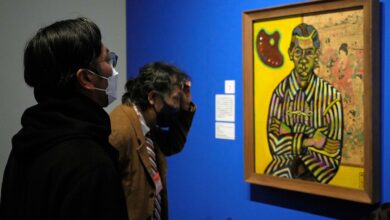A project to strengthen the study of Japan’s dwindling Ainu language

By Maria Roldan
Tokyo, Mar 1 (EFE).- Specialists in the endangered language of the Ainu indigenous people of Japan have published the most complete compendium of their language to date, which seeks to enrich the field of linguistics and generate interest among other researchers to reinvigorate their study.
“Handbook of the Ainu Language” from the De Gruyter Mouton publishing house, covers over approximately 700 pages the history of the study of this language’s obstacles and problems and particularities.
The Ainu is one of the so-called isolated languages, such as the Basque of the Iberian Peninsula or the Yagan of South America, a language with no genetic relationship with any known living or dead language.
Linguistic research into Ainu began in the early 20th century. It is a widely documented language, with freely available online resources such as a corpus of folklore or a conversation glossary from the National Institute of Japanese Language and Linguistics, but most existing dictionaries and grammar focuses on a particular dialect.
The Ainu language has three dialect groups, that of the island of Hokkaido, in northern Japan; that of the Russian island of Sajalin, to the north of the Japanese island; and the one from the Kuril Islands, northeast of Hokkaido, which died at the beginning of the last century.
The new manual “tries to cover all areas to a certain extent,” said linguist Anna Bugaeva, who has led the book’s edition, in an interview with EFE.
Settled in Japan for almost three decades, Bugaeva came to the country in 1996 to deepen her study of Japanese, which she began at the University of Saint Petersburg. Her interest in the origins of the majority language of the archipelago and her dialects led her to wonder what her relationship was with the Ainu language.
“Somehow, after writing my graduation thesis, I had the impression that Ainu is not related to Japanese, it is very enigmatic in that sense,” the linguist said.
There are about six thousand languages in the world and about two thousand linguistic families, and also something more than a hundred languages not related to them, the isolated languages.
“It probably wasn’t always like this. They used to have relatives, they just died and they are the remnants of other languages that went extinct, so (language isolates) can become a way to unravel the past,” Bugaeva said.
The Ainu language has very particular characteristics, the academic said, including some very rare types of nominal incorporation.
“If you read linguistics books they say, ‘It’s impossible to incorporate the subject of transitive verbs,’ but Ainu can do it to a certain extent. It’s quite rare, but not impossible.”
Bugaeva said she believes that by perpetuating the study of a linguistic “relic” like this “it is possible to contribute to linguistic theory by discovering something particularly new” and thus “enrich our knowledge about human language in general.”
This new manual on the Ainu language has been written to be accessible to any linguist without prior knowledge of it, to set a benchmark for academic citation and with some hope of generating interest in its study.
Seventeen researchers have participated in its conception, the entire Ainu linguistic community, which is dwindling, Bugaeva said. The limited job opportunities are joined by the dying community of native speakers.
Even at the end of the ‘90s there were barely a dozen speakers left. The fact that the language is of oral tradition already made it difficult to work with these people, who are already very old. Others continue today to hide their origins or are simply unaware of them.
The Ainu were subjected to a repressive assimilation by the Japanese government beginning in 1899. They were forced to turn their backs on their language and culture, their lands were expropriated and they were dispersed throughout the country, in addition to being discriminated against.
It was not until 2019 that the Japanese parliament approved the first regulations that expressly recognized this community with a physiognomy similar to the Eskimo and its own traditions as indigenous.
In recent years, the government and Ainu associations have increased the promotion of culture and language study, many of whose students are the community’s own descendants, seeking to reconcile with their origins.





